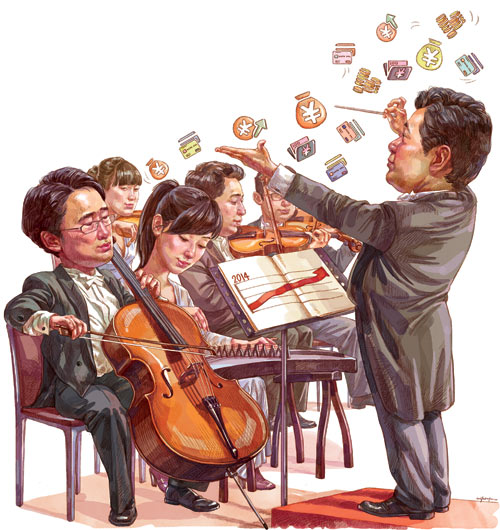China has set a course of major economic changes but extent and pace of implementation remains the big question, Andrew Moody reports
The annual Central Economic Work Conference in Beijing last month attracted more international attention than usual.

Commentators and observers were looking for what reform steps the new leadership were likely to introduce in the first full year in charge.
The increased anticipation was partly a result of the Third Plenum Session of the 18th Communist Party of China Central Committee in November that laid out an ambitious 10-year program by announcing the setting up of a high-level commission to coordinate nationwide reforms.
The four-day economic work conference was attended by all seven standing committee members of the Political Bureau of the CPC Central Committee, including President Xi Jinping and Premier Li Keqiang.
The main focus, particularly for the markets, was an indication as to what growth target the government was likely to set for 2014.
With the outcome for 2013 still not known — although now expected to be about 7.6 percent — what analysts were looking for was whether the government was about to relax the target from "about 7.5 percent" this year to allow room for structural economic reform.
The actual new figure will not be known until the March meeting of the National People's Congress, the national legislature.
Those reading the tea leaves at the economic work conference anticipate that this is likely to be between 7 percent — what government officials have already stated is the absolute floor — and 7.5 percent.
With China likely to be buoyed by any pick-up in global economic demand, another 7.5 percent target may not indicate a lack of appetite for reform.
Growth targets also have a history of not changing very much. Until 2012, when it dropped to 7.5 percent, the figure had been held at 8 percent for eight successive years.
As for some of the language used in the official statement released on Dec 13 at the end of the conference, it was difficult to detect discernable change.
In fact, maintaining a "proactive" fiscal policy and "prudent" monetary policy was the same terminology used in the previous year's statement.
There was, however, a big focus this time on the problem of local government debt, which many hold is the central weakness of the economy. The statement called for local authorities to be held accountable for their budgets and to "put right any incorrect official performance orientation".
The conference also called for industrial restructuring and an end to excess capacity in certain sectors and the phasing out of obsolete industries in favor of those promoting innovation.
In other areas, the conference wanted to push forward agricultural reform to be less reliant on imports and also improve food security.
There was also emphasis on opening up the economy and the need to set up further free trade zones, such as the one in Shanghai launched last year.
This is likely to hold the key as to the pace of the opening-up of China's capital markets, which is seen as one of the most risky but at the same time vital reform processes the economy has to withstand.
Shuang Ding, senior China economist at banking group Citi in Hong Kong, says the risk of anticlimax following the third plenum had been avoided and it was clear the government was serious about economic reform.
"I would say that it is further confirmation that the leaders are very determined to push ahead with reforms."
Ding, a former economist at the International Monetary Fund, believes the reform agenda still has an inbuilt conservatism. He says the government is likely to stick to a 7.5 percent growth target for 2014.
"This is one of the key messages I got ... that the government is not ready to sacrifice growth in a very significant way and that they emphasize that a stable economic and social environment is still a necessary condition for reform."
He says he can understand the government's caution on this.
"I think not only policymakers but I would say most in the financial markets are not ready to accept below 7 percent growth yet. I think that would be a real gamechanger."
|
|
|
|
|
|
|
|
